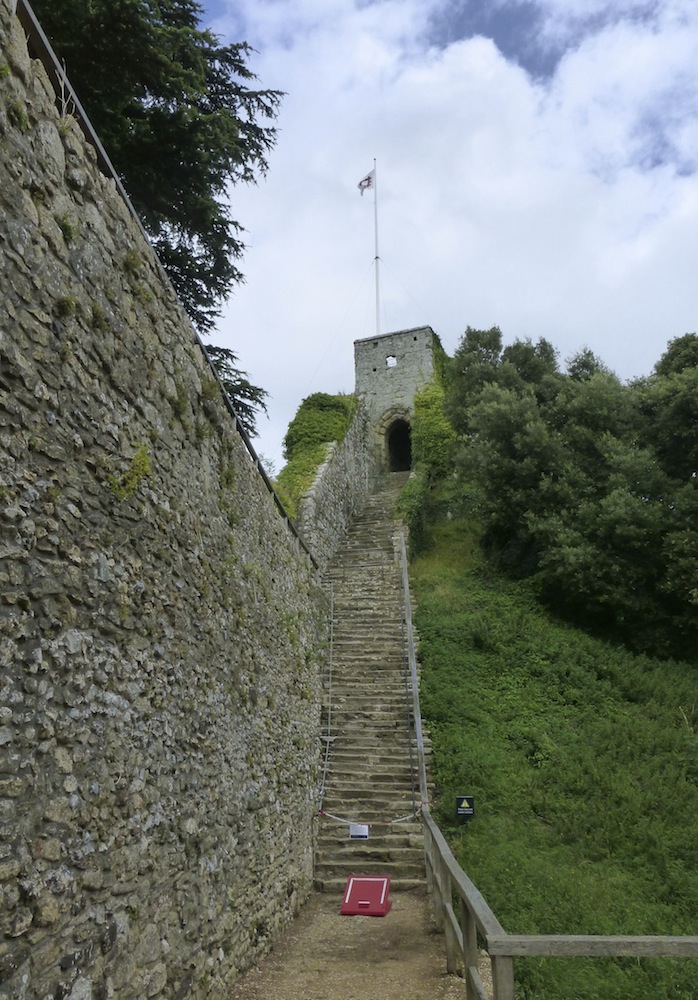

Left: Gatehouse of Carisbrooke Castle, Isle of Wight. Right: Entry arch to the castle.
Carisbrooke Castle, Newport, Isle of Wight. This is a major feature on the island: a fortress in medieval times, it was enlarged at the end of the Tudor period, and restored and altered under Philip Hardwick (1792-1870) in Victorian times: Hardwick worked on the Great Hall and adjoining buildings from 1856 (Lloyd and Pevsner 107). The castle has very strong historic associations with the monarchy because it was here that Charles I was immured in 1647-48 before being beheaded, here too that his daughter Elizabeth died, aged 14, in 1850, and here, much later, that Queen Victoria's youngest daughter, Princess Beatrice, lived when she was governor of the island. The princess was the castle's last resident, living there from 1912-44.


Left: The Chamber Wing, restored in 1856 under Hardwick, with the old well-house, complete with treadmill next to it. Above and behind is the keep. Right: The bed in which Charles I slept.
From the outside, the Chamber Wing's two-tiered windows are seen on the left. The other windows here (seen adjacent to them and in the middle), were also by Hardwick: "to an interesting design — two-light, squared-headed and transomed, but plain square openings above" (Lloyd and Pevsner 110-11). In Princess Beatrice's time, the room once used as a bedroom by Charles I became a dining room. Stuffed antelope- and stag-heads were (and still are) displayed on the walls. This room has the fine two-tiered Gothic windows put in by Hardwick. Hardwick also did some work on the Great Hall, but its windows date from the late Victorian period, after him (Lloyd and Pevsner 109). Both lower and upper galleries of the Great Hall now house displays of the castle's and the Isle of Wight's history.



Left to right: (a) Entrance to the adjacent Great Hall now used as a museum. (b) Next to the curtain wall are the steps up to the keep (71 in all). (c) The old-world charm of the stonework here.
This is a fascinating place for people interested in defensive works of the Saxon to late Tudor period, and in the history of the monarchy. It is of less interest to Victorianists, but Philip Hardwick's involvement is worth looking at. Also of interest is the work of architect Percy Stone, who designed the chapel when it was rebuilt in Edwardian times, and who designed many other buildings on the Isle of Wight (and the Victoria Memorial in Newport).
Photographs and text by Jacqueline Banerjee. You may use these images without prior permission for any scholarly or educational purpose as long as you (1) credit the photographer and (2) link your document to this URL or cite it in a print document. [Click on the images to enlarge them.]
Related Material
Bibliography
Lloyd, David W., and Nikolaus Pevsner. The Buildings of England: Isle of Wight. New Haven and London: Yale University Press, 2006.
"Carisbrooke Castle." British History Online. Web. 1 December 2017.
Created 1 December 2017